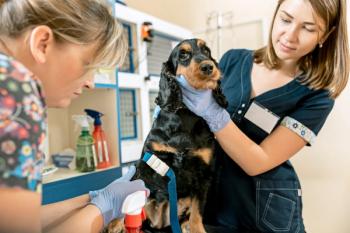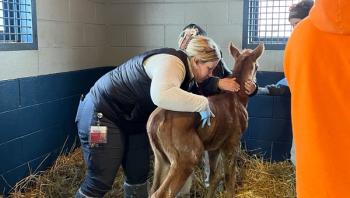
How veterinary medicine is like a T-bone steak
New veterinary graduates might be savoring the intangible benefits of their chosen career more than we realizeand burning the return on their educational investment.
Every decision you make is based on a desire to maximize happiness, but you make your decisions within a set of limitations. Every time you take money out of your budget to purchase something that makes good sense, that item provides a tangible result. But what about the decisions you make that garner intangible results, especially those that make you happy? Let's take an everyday example.
Let's say you are a rational consumer of protein in your diet. You've evaluated all food based on the ability of that food to meet your basic amino acid requirements and you've determined that the amino acid content is almost identical in a T-bone steak and shoulder roast. Since the meat's price per pound is jaw-dropping, you should choose the shoulder roast. Some would even argue that if you choose the T-bone you're being irrational. But what they're failing to consider are the intangible benefits of a T-bone-its wonderful smell on the outdoor grill or the joy of celebrating some special event. The difference between the price you paid for the T-bone and that of the shoulder roast provides a measure of the intangible benefits of the T-bone.
Incoming college freshmen and those pursuing postgraduate studies are facing this same type of decision. In pursuing a degree, students consider the fact that they're going to make a higher salary with the degree than without it. That's the tangible benefit. But there are also intangible benefits that don't result in a higher salary. For veterinarians those might include the enjoyment they get from helping animals, improving public health and safety, or teaching new veterinarians.
These benefits are extremely hard to measure, but we do know that veterinary students are willing to pay to get them. And this maximizes their happiness. A highly informed, rational veterinary school applicant would understand that the net benefit of a DVM degree is determined by taking the total of both the tangible and intangible benefits of the degree and subtracting the total cost of obtaining the degree (tuition, fees and other school-related expenses). Most of us are hardwired to expect the benefits of our efforts today. But the net benefit of a veterinary degree occurs over a 45-year career! As a result, future benefits must actually be discounted to reflect their value in today's dollars.
In the book Veterinary Medicine in Economic Transition (Wiley, 1997) author Malcolm Getz says, “When the present value of the increment in income exceeds the present value of the cost of the education, the high income acts as a green light, and the flow of newcomers should be substantial. When the net present value is zero, the income level will act as an amber light, and newcomers will be indifferent between the veterinary career and their best alternative. Should the net present value turn negative, the income signal will be red, and prospects will not choose to enter the career.”
The American Veterinary Medical Association (AVMA) has recently compiled the latest data on the returns on educational investment for veterinarians (see Table 1). As the average debt load has grown to more than $150,000, incomes have not kept pace; they now average just over $67,000, according to the AVMA's most recent senior survey. The average for all veterinarians graduating today indicates that the net present value (NPV) for women is negative and for men skews only slightly positive. The return on their investment is well below the figures seen in other segments of the economy, such as stocks and real estate. Even more important is the nearly $1 million difference between the NPV of equine practitioners with those who practice in industry. It would appear that, for some practice types, Getz's red light should have lit up some years ago.
Why can't we determine the relationship between the flow of new applicants and the NPV of obtaining a DVM degree? Well, there are two possible reasons. First, we have no information on how knowledgeable applicants are regarding the costs versus the returns of the DVM degree. Second, even if this is known, without knowing the amount of intangible benefits the applicants associate with obtaining the degree, we can't be sure at what point along the return on investment continuum the amber light should begin to turn red.
As such, two important research questions can be posed from these findings. First, why is there such a large gap between types of veterinary practice? This would suggest that the horizontally related markets making up the market for veterinarians are disconnected, indicating that pricing signals are not working. We need to understand why.
Second, as the red light has clearly been shining for some time, why has it not stemmed the flow of newcomers? Do the new veterinary graduates have access to the right data and understand what it means? Are the intangible benefits so attractive that policy changes are needed to assist the markets in improving efficiency?
If we can begin to answer these important questions for the veterinary profession, just imagine what we could do for the nation's economy.
Newsletter
From exam room tips to practice management insights, get trusted veterinary news delivered straight to your inbox—subscribe to dvm360.




